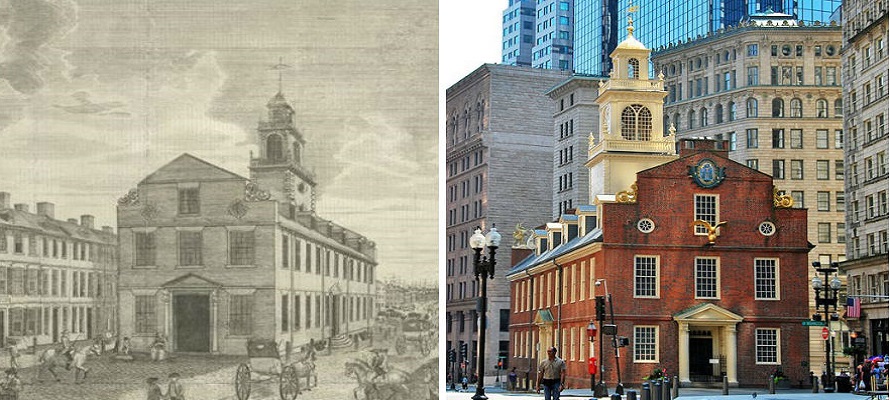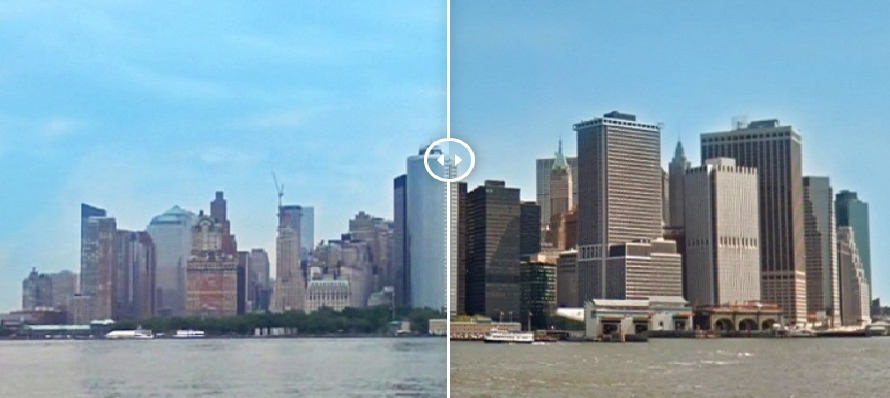Los Angeles Then and Now: A Century of Change in the City of Angels in Photos
Share this article:
Such is the reputation of Los Angeles that it hardly needs an introduction. Among its accolades, it stands as the second largest city in the U.S., one of the most populous cities in the world (13 million inhabitants in the metropolitan area and 18 million across the greater region), and boasts the world’s third strongest Global Metropolitan Product. This is to say nothing of L.A.’s cultural, productive, and technological exports for which it is internationally famed.
But if L.A. has become such an important player on the world stage, that is because its history – especially over the last century – has allowed it to become so. With a chameleon-like ability to adapt to the times, combining a mix of continuity and ingenuity, L.A. has forged its own success, and nowhere is this more conspicuous than in its architecture. Here at RentCafe, we’ll take you through the developmental history of some of L.A.’s most important landmarks – some pointing back in history, some forward-looking, – and in doing so, provide snapshots that might help contextualize the L.A. of today.
Simply drag the arrow bar back-and-forth to view the old and the new images.
1. Farmers and Merchants National Bank – View from Main and 4th Street
The classical façade of this late 19th-century temple of commerce pays fitting testament to the ancient association between monetary practices and temples. The bank, founded by a cohort of L.A.’s most affluent businessmen in 1871, was remarkably successful. It was relocated to its current situation in 1905, and continued to operate until the late 1980s. The building is listed as one of LA’s historical monuments, something reflected in its current, aesthetically driven, function – as a venue for special events and a location for filming.
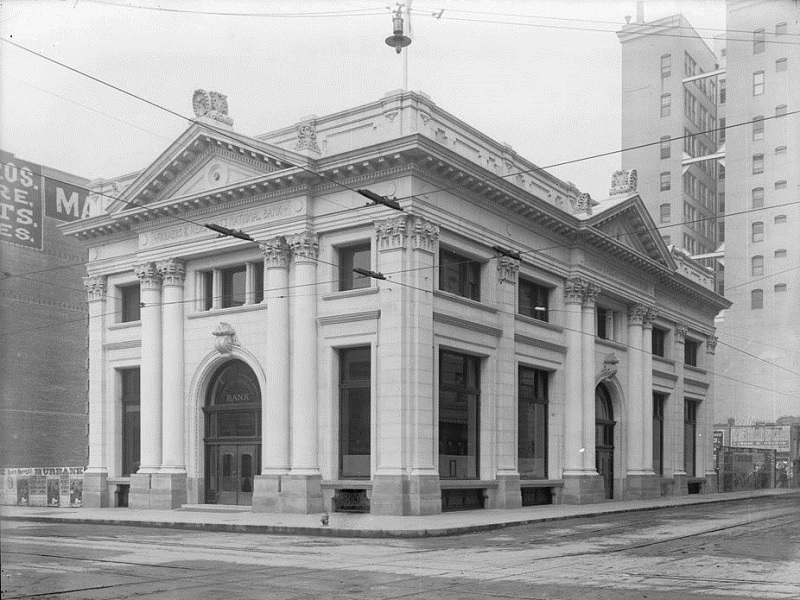
 [/before-after]
[/before-after]
Photo Credit 1908: California Historical Society @ University of Southern California; Photo Credit 2015: Google Maps
Use the code below to embed the image on your website:
2. Los Angeles Times Building – View from Spring and 1st Street
On the corner of Spring and 1st Street sits Gordon B. Kaufmanns’ Art Deco Los Angeles Times Building, home to the famous newspaper of the same name. At its inauguration, it was hailed as ‘a monument to the progress of [the] city and Southern California’. Progress it certainly was; from the earlier photograph we can see that the site was previously occupied by the Hotel Nadeau – perhaps the city’s first four-story construction, and thereafter by two city halls. Directly across the street, the building with the cupola was known as the Wilson Block, and was constructed in 1889.

 [/before-after]
[/before-after]
Photo Credit 1910: California Historical Society @ University of Southern California; Photo Credit 2015: Google Maps
Use the code below to embed the image on your website:
3. Walter P. Building – View from Broadway & 6th Street
This one-million-dollar Beaux Arts construction, dating from 1909, was built by Walter P. Story, an illustrious military figure, on a lot purchased by his father nineteen years earlier for $48,000. Throughout its history, the building has preserved its capitalist function; previously utilized by Water P. Story as retail space, the building now houses both offices and jewelry businesses, boasting an enviable interior comprised – among other things – of white marble features and a Tiffany-style stained glass skylight.
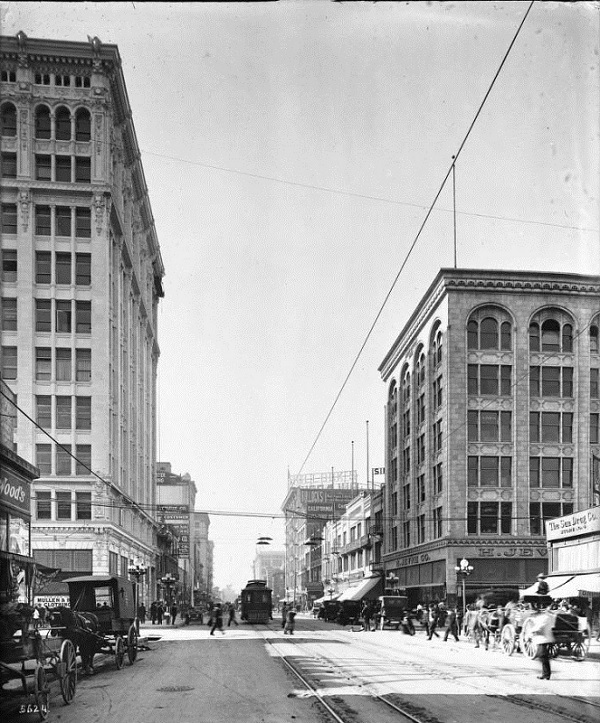
 [/before-after]
[/before-after]
Photo Credit 1908: California Historical Society @ University of Southern California; Photo Credit 2015: Google Maps
Use the code below to embed the image on your website:
4. Fifth Street and State Normal School – View from Olive and 5th Street
Heading west on Fifth Street at the turn of the century, you would have ultimately found yourself looking up at the four-story Victorian-style State Normal School, a pedagogic facility opened in 1882. The straightening of Fifth street in 1922 required its demolition, and what came to occupy part of its former site was the Los Angeles Public Library. Perhaps just as conspicuous as the street’s leveling in the modern picture is the addition of the Gas Company Tower – a 52-story class-A skyscraper, the lobby of which features in the 1994 film Speed.
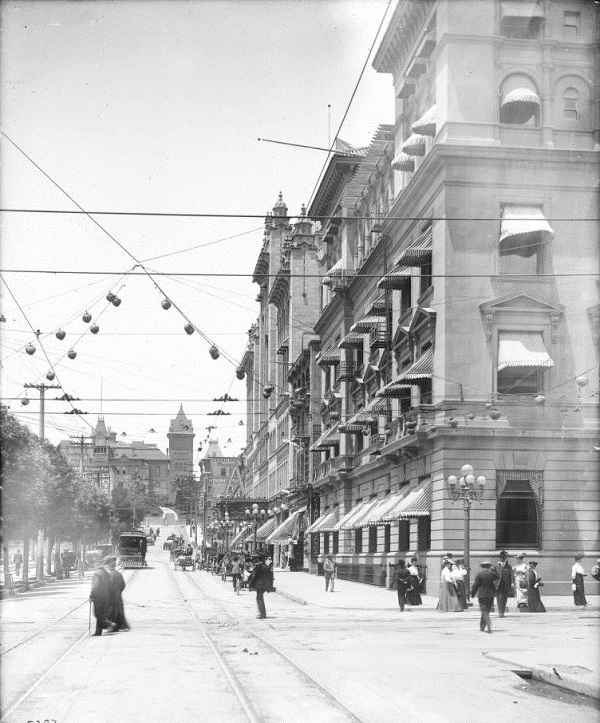
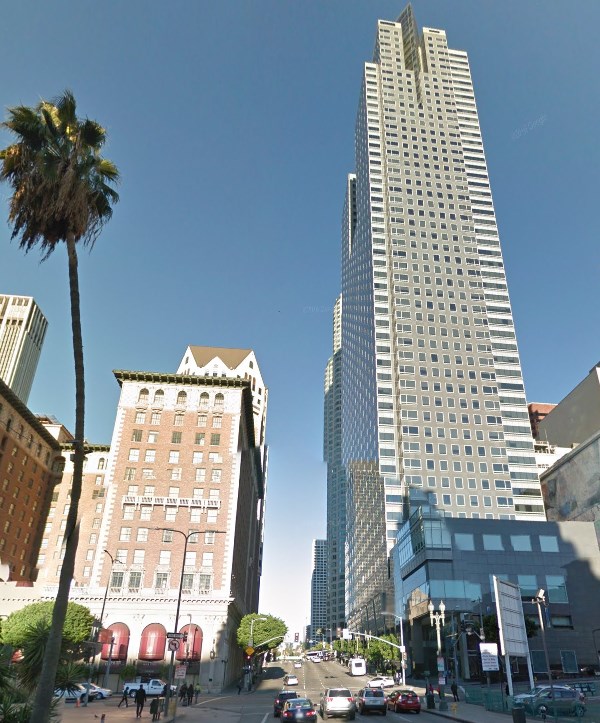
Photo Credit 1910: California Historical Society @ University of Southern California; Photo Credit 2015: Google Maps
Use the code below to embed the image on your website:
5. Los Angeles Herald Examiner’s Office – View from Broadway and 5th Street
Established by William Randolph Hearst to advance his campaign for the democratic nomination and to rival the LA Times’ circulatory monopoly, the Los Angeles Examiner – becoming the Los Angeles Herald Examiner after a successful merger in 1962 – enjoyed considerable success until its closure in 1989. After the construction of new offices in 1914 on the corner of Broadway and 11th Street, the original Los Angeles Examiner’s offices were converted in the 1920s into what are now the Shybary Grand Lofts – condos which combine a centralized location with excellent amenities and affordability.
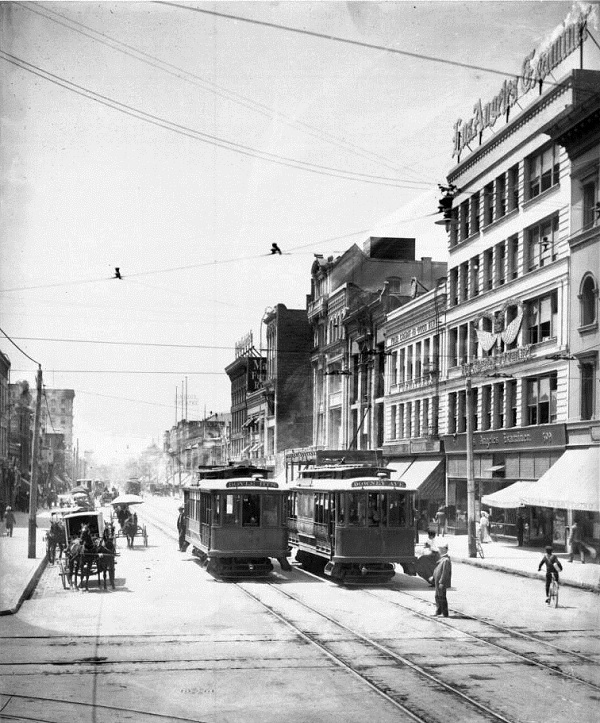
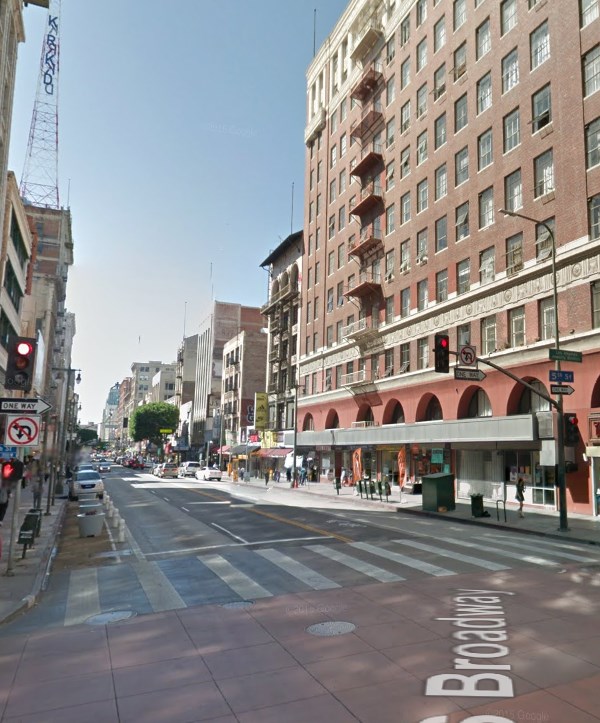 [/before-after]
[/before-after]
Photo Credit 1908: California Historical Society @ University of Southern California; Photo Credit 2015: Google Maps
Use the code below to embed the image on your website:
6. Angel’s Flight – View from Hill and 3rd Street
Dubbed ‘the world’s shortest railway’, the first incarnation of Angel’s Flight served some of L.A.’s most prosperous residents of the Bunker Hill district from 1901 until 1969. The original photograph was taken near the Hill Street entrance, with the Olive Street terminus clearly visible in the near distance. This scene would be alien to today’s unknowing visitor as the surrounding shops and hotels (the Hillcrest and the Astoria) have come to be replaced, and the funicular was relocated in 1996. It still operates under the same name half a block south of the original site.
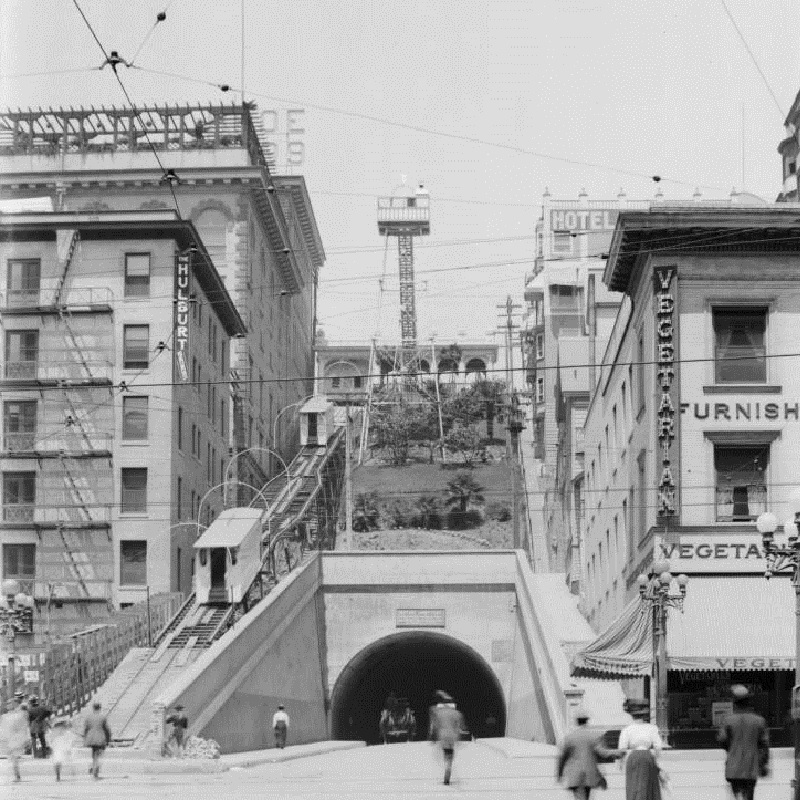
 [/before-after]
[/before-after]
Photo Credit 1907: California Historical Society @ University of Southern California; Photo Credit 2015: Google Maps
Use the code below to embed the image on your website:
7. Westminster Hotel – View from Main and 4th Street
Designed in the Victorian style by the prestigious architect Robert B Young in 1887, and constructed upon the former site of a Chinese market, this four-story building (with a six-story tower), property of the O. T. Johnson Corporation, was situated on the northeast corner of North and Main St., in close proximity to the Farmers and Merchants National Bank. Though it continued to operate well into the 20th century, by the 1930s the Westminster was a vestige of its former grandeur, and in 1960 it was razed to make way for new developments – now the Medallion LA Apartments.
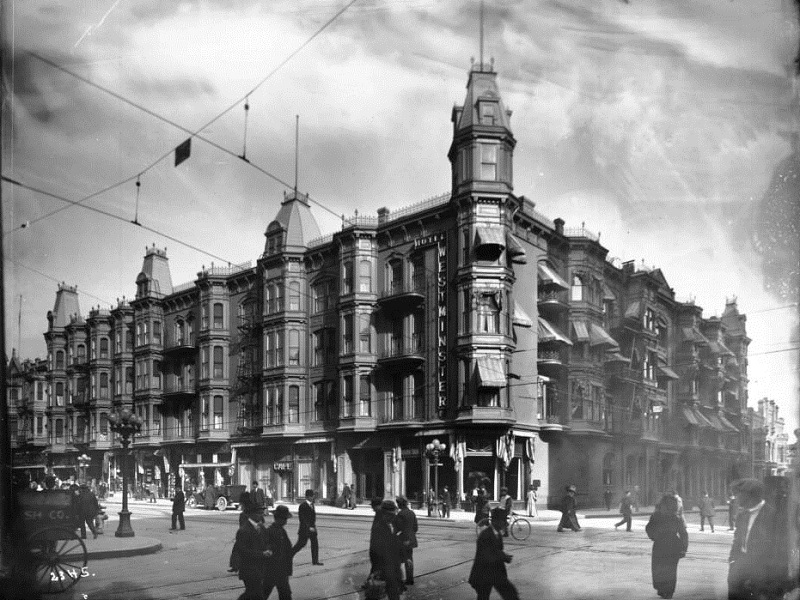
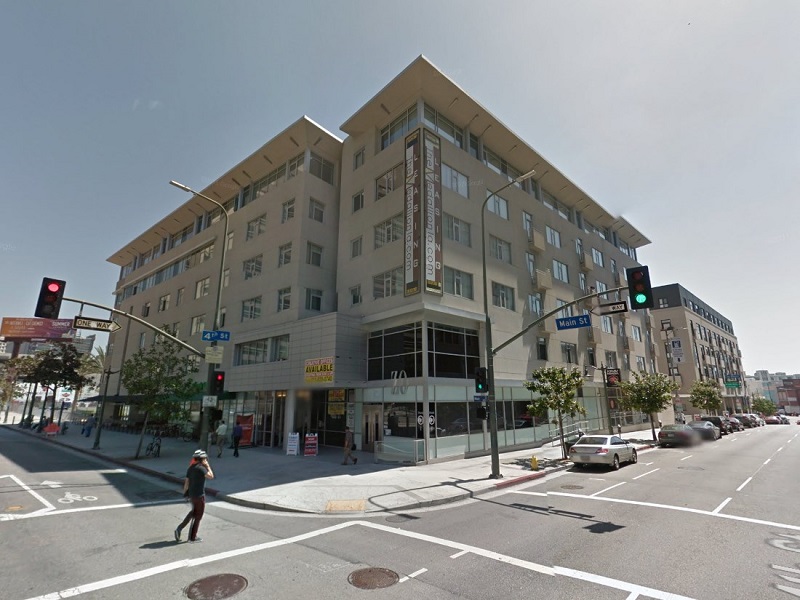 [/before-after]
[/before-after]
Photo Credit 1900: California Historical Society @ University of Southern California; Photo Credit 2015: Google Maps
Use the code below to embed the image on your website:
8. Los Angeles Public Library – View from Flower and 5th Street
The Farmers and Merchants National Bank is not the only building in Downtown L.A. to make architectural nods to antiquity. The symbolic mosaic pyramid atop Los Angeles’ Public Library, the brainchild of Bertram Goodhue, symbolizes the ‘light of learning’; a service it provides to the entire city. Continuity characterizes this library, as shown in the photograph. Change comes in the context of the city’s skyline; the 62-story AON Center, as the second tallest skyscraper in L.A., now towers over the library, while the 28-story 550 South Hope Street (a.k.a. the KPMG Center) stands due south of the library. The 600,000-square-foot KPMG Center was one of 2014’s most expensive commercial transactions, changing hands for a whopping $240M.
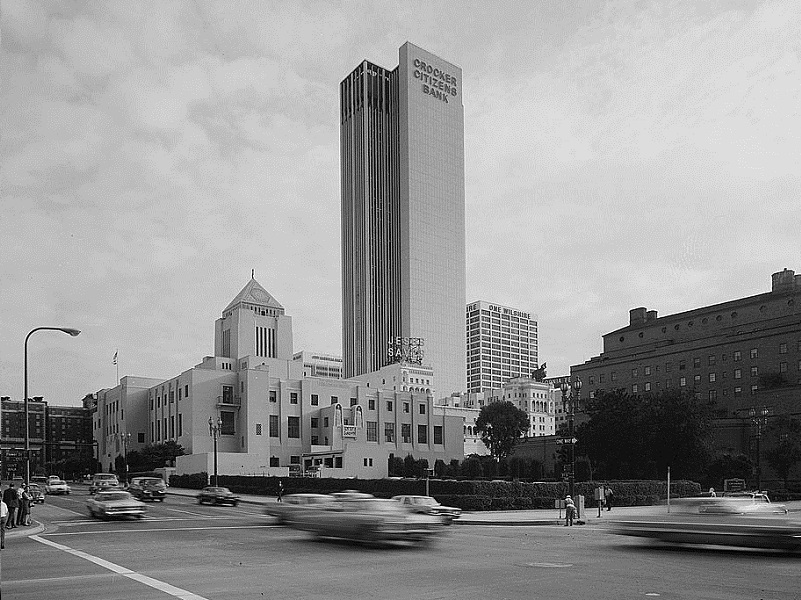
 [/before-after]
[/before-after]
Photo Credit 1971: Library of Congress; Photo Credit 2015: Google Maps
Use the code below to embed the image on your website:
9. Warner Bros. Theatre – View from Hill and 7th Street
The original 1942 photograph shows the nine-story Beaux Arts building in the second of its four functional incarnations, and the last of its theatrical. First opened in 1920 as the second of L.A.’s theatres (and the sixteenth in the US), it became the Warner Bros. Downtown Theatre nine years later and was to remain so until 1975. The building was briefly used as a temple of Christianity before becoming a temple of capitalism – used as a retail space, The Downtown Jewelry Exchange, since the late 1980s.
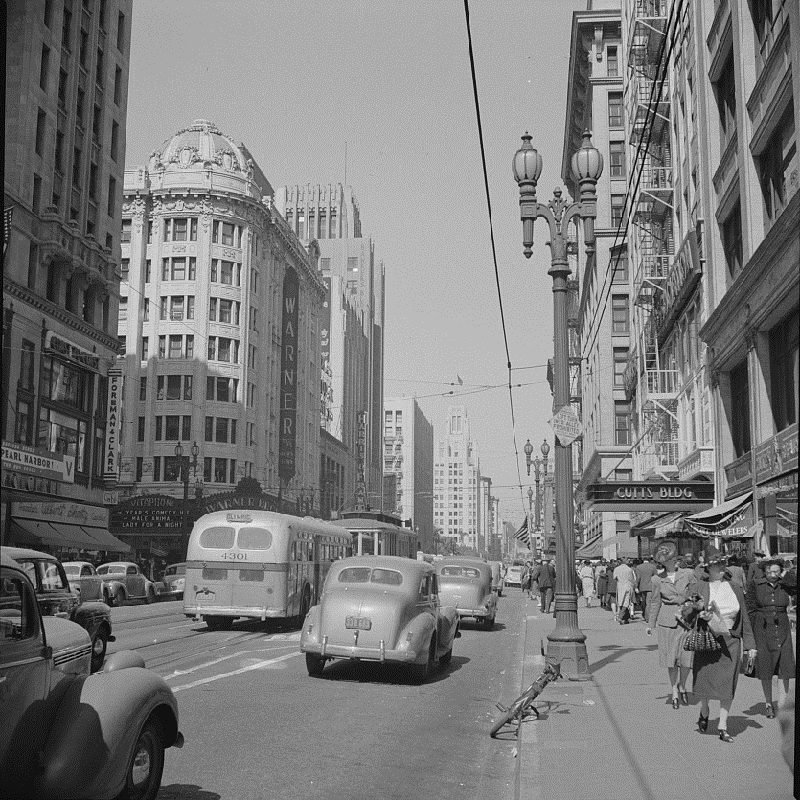
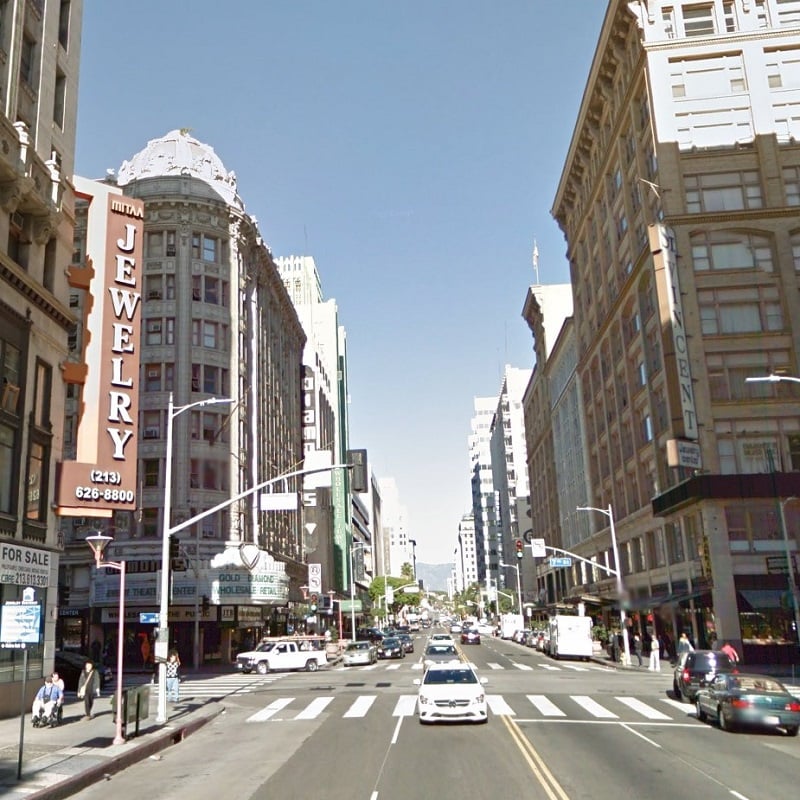 [/before-after]
[/before-after]
Photo Credit 1942: Library of Congress; Photo Credit 2014: Google Maps
Use the code below to embed the image on your website:
10. Plaza Fire House – View on N Los Angeles Street
No. 730 on the list of California’s Registered Historical Landmarks is the Old Plaza Fire House, the oldest fire station in L.A. It was designed by local architect William A. Boring and completed in 1884, serving the purpose for which it was designed until 1897. In the interim period, before becoming a fire-fighting museum in 1960, the building was used for almost every conceivable purpose – from a saloon to a Chinese market, and from a restaurant and seedy hotel to a drugstore.

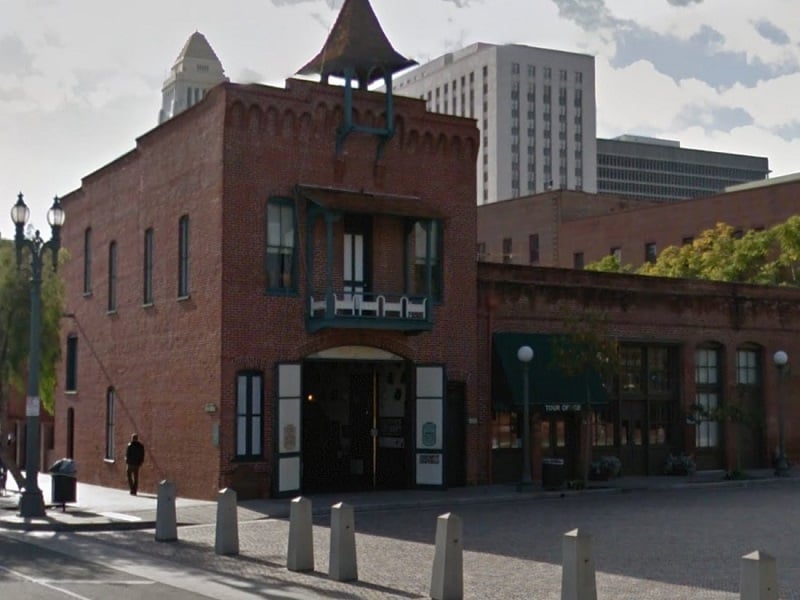 [/before-after]
[/before-after]
Photo Credit 1887: Library of Congress; Photo Credit 2016: Google Maps
Use the code below to embed the image on your website:
11. Edison Building / One Bunker Hill / The CalEdison – View on Grand and 5th Street
When it first opened at the foot of Bunker Hill in 1931, James and David Allison’s Art Deco structure and headquarters of Edison Co. was the apex of modern architectural design. Maximizing on the city’s upper-limit of 13 stories and occupying 270,000 square-feet, its USP was its all-electric heating and cooling system. In 1970 the building was vacated by Edison and leased as office space. Recently rebranded as The CalEdison, the building is currently undergoing a major renovation that will see it transformed into a top-notch office building, all while retaining its historic architectural integrity. Dwarfing the building since the 1990s are the 72-story U.S. Bank Tower and the 50-story Gas Company Tower.
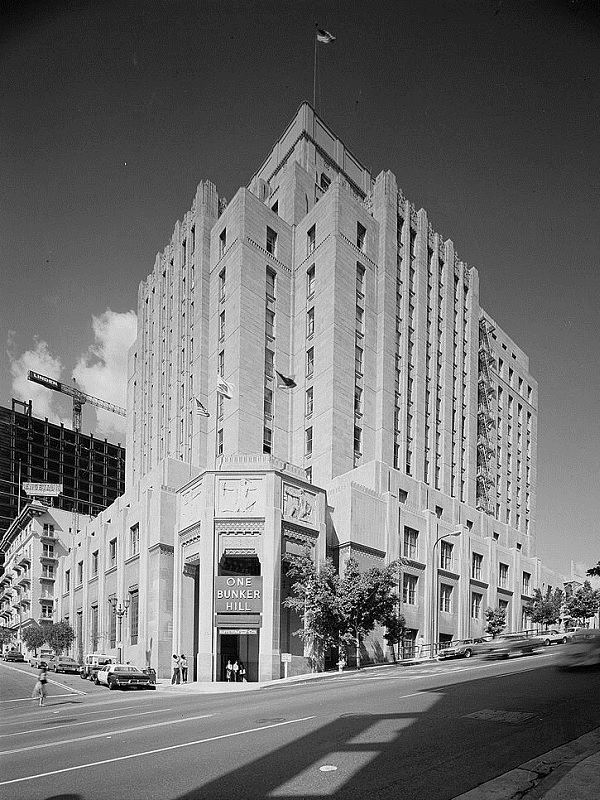
 [/before-after]
[/before-after]
Photo Credit 1970: Library of Congress; Photo Credit 2015: Google Maps
Use the code below to embed the image on your website:
12. St. Joseph’s Catholic Church – View on Los Angeles and 12th Street
As the result of an accidental yet devastating fire on September 4th 1983, this is sadly not a narrative of continuity and development but of aesthetically detrimental replacement. The original church, dedicated in 1903 to serve the city’s German-speaking immigrants, boasted an abundance of European artworks, frescoes and furnishings, as advertised in an LA Times article from March 12th 1903. Perhaps most magnificent on the original’s façade were the two five-story bell-towers. They were, unfortunately, marked for demolition on the grounds of being unsafe.
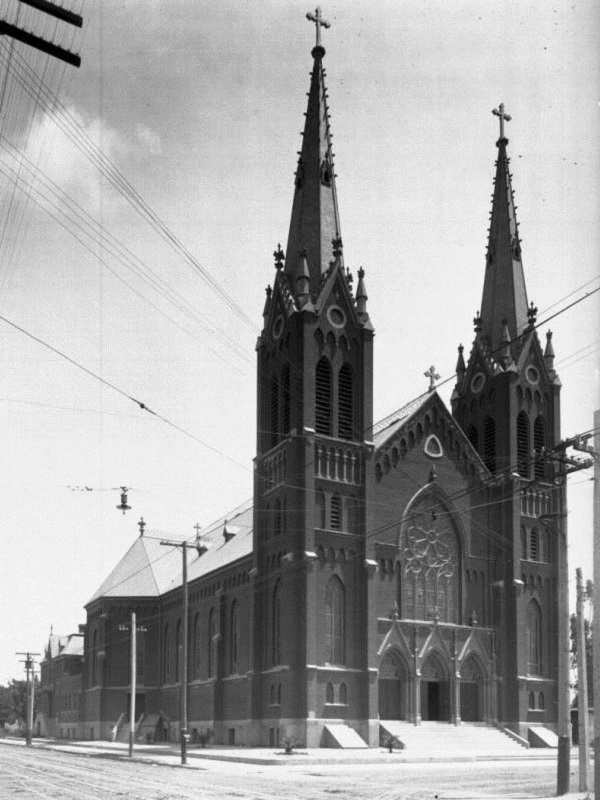
 [/before-after]
[/before-after]
Photo Credit 1910: California Historical Society @ University of Southern California; Photo Credit 2015: Google Maps
Use the code below to embed the image on your website:
“We tend to think of Los Angeles”, wrote the renowned Californian essayist D.J. Waldie, “as a place where the past is constantly being erased…. If it should disappear its symbolism would be lost to us. Its history would turn into a reference in a book rather than a presence in our life.”
To think in terms of erasure, though, is to be guilty of oversimplifying. True, some of the constructions have come to be demolished (more often than not out of necessity), but much more common is their alteration, modernization and adaptation, in terms of function or appearance or both. It is this narrative of continuity that best helps explain Los Angeles’ place in the world.
Have we missed your favorite L.A. landmark? Let us know in our comments section (and make sure to send us any photos you might have). You never know, you may just see them in our next edition!
Fair use and redistribution
We encourage you and freely grant you permission to reuse, host, or repost the images in this article. When doing so, we only ask that you kindly attribute the authors by linking to RentCafe.com or this page, so that your readers can learn more about this project, the research behind it and its methodology.
Share this article:
Amalia Otet is an online content developer and creative writer for RENTCafé. She loves all things real estate and strives to live beautifully, one green step at a time.
The Ready Renter has your back
Tips, news, and research curated for renters, straight to your inbox.




Related posts
Subscribe to
The Ready Renter newsletter


